Best Stretching Exercises for Tight Hip Flexors
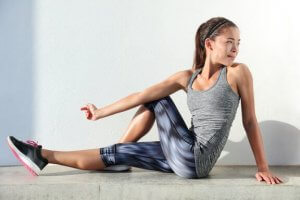
The hip area is very important since it carries the weight of the upper body while maintaining mobility. We can sometimes suffer from what is known as “tight hip flexors”. Often, we don’t know how to deal with it. Learn about the best stretching exercises you can use to help you.
Stretching exercises for tight hip flexors
Our hips allow us to perform many movements: rotation, flexing, extensions, abductions. All of these are made through the connection to many muscles, both lower and back muscles.
If our hip is unbalanced, we may suffer from different ailments, among which is coxarthrosis. To avoid this we’ll show you a few stretching exercises for tight hip flexors:
1. Stretch the quadriceps and anterior rectus muscles
Stretching the quadriceps and the anterior rectus will also relax the psoas muscle, another main hip flexor and very important to ensure that the pelvis and spinal cord are in the correct position.
Stand up with your legs stretched, bend your right knee, taking your right foot backward until it touches your thigh. Hold your foot with your right hand, using your left hand to keep your balance. Hold this position for 15 seconds and switch sides.
You will need balance to do this exercise, Once you practice it several times you will find you no longer tip to your sides. A good technique is to focus your sight on a point in front of you and not move your head.
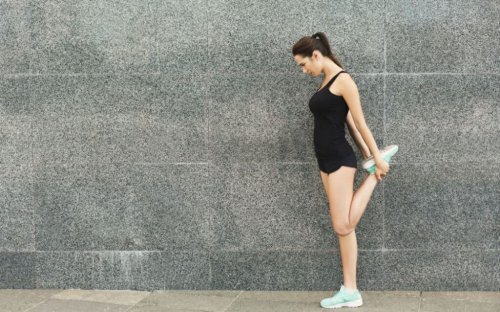
2. Sitting inner rotation
In order to perform these hip flexors exercises, you’ll need to sit down on the floor or on a mat. Bend your knees and place the soles of your feet in front of you, slightly apart from each other. Place your hands on the floor behind your back.
Turn your hip to the right side, in a way that your right knee will touch the ground. Your left knee will be close to the ground without touching it. Try not to move your torso so the exercise is exerted by the lower body.
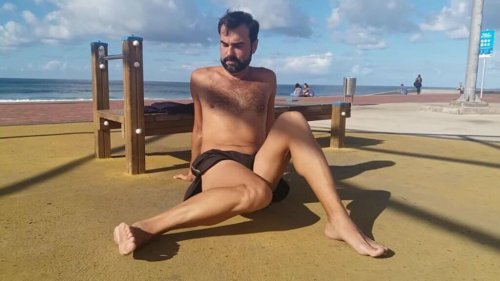
Image: Youtube Juanje Ojeda Crossier.
3. Stretching the psoas iliac
As we mentioned before this muscle is important because of its role in keeping the pelvis in position. The bad part is that it’s actually one of the most abused muscles. This is due to sedentary habits and staying in one position all day, such as sitting at a desk.
In order to stretch the psoas and the hip flexors at the same time, stand up, place your hands in front of your chest and take a step forward with your right foot. Bend your knee slightly leaving your left leg stretched out completely in a diagonal position. Exert certain pressure for a few seconds and switch sides.
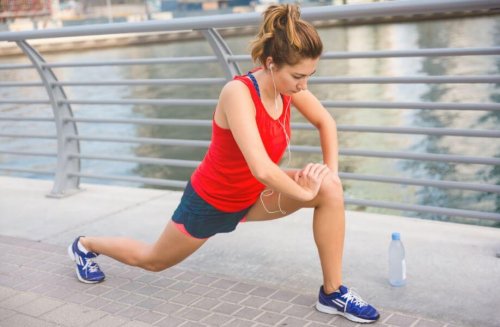
4. Stretching hip and adductor muscles
Similar to the previous exercises, except you’ll need to stretch your knees even more. Use a mat and a step (or a similar surface). Rest your right knee on this elevated platform and take a step forward with your left foot. The idea is to place your hip forward.
After a few seconds, place your left leg sideways, lined up with your shoulder. Wait 30 seconds and switch sides.
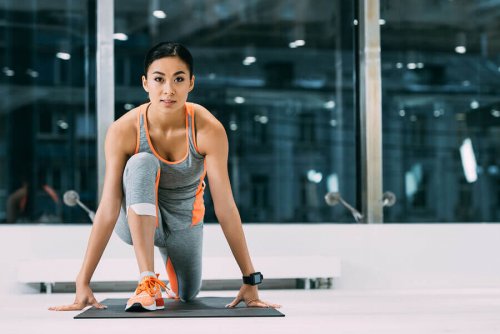
5. Stretching hip adductors
Tight hip flexors are due to a lack of mobility. This is why this exercise is so useful. It allows you to move the hip zone and add flexibility and elasticity, mainly to the adductors, (inner part of the thighs).
To do this exercise, stand on your feet with your legs spread shoulder width apart, leaving your hands on your waist. Now, move your body to the right while you bend your knee to that side and stretch your left leg.
Make a sort of “bounce” from side to side very carefully to avoid hurting yourself or provoking pain. If you can, lower your torso a little more every time you move.

6. Sitting gluteus stretch
In this last exercise for hip flexors you’ll notice how they “loosen up” and at the same time, you’re stretching your back and neck.
Sit down with your legs crossed (lotus position) and move your torso forward. Touch the ground with your hands, your arms should be stretched ahead of your body. Maintain this posture for several seconds.
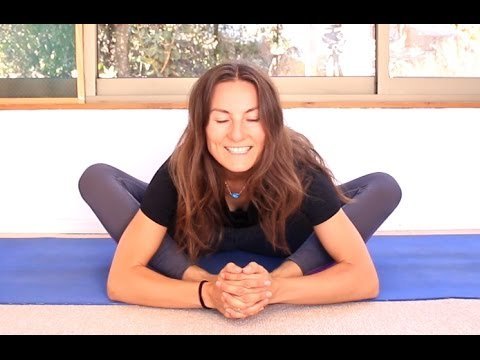
Image: Youtube MalovaElena.
What do you think of these tight hip flexor exercises? Try them today and feel the benefits immediately!
The hip area is very important since it carries the weight of the upper body while maintaining mobility. We can sometimes suffer from what is known as “tight hip flexors”. Often, we don’t know how to deal with it. Learn about the best stretching exercises you can use to help you.
Stretching exercises for tight hip flexors
Our hips allow us to perform many movements: rotation, flexing, extensions, abductions. All of these are made through the connection to many muscles, both lower and back muscles.
If our hip is unbalanced, we may suffer from different ailments, among which is coxarthrosis. To avoid this we’ll show you a few stretching exercises for tight hip flexors:
1. Stretch the quadriceps and anterior rectus muscles
Stretching the quadriceps and the anterior rectus will also relax the psoas muscle, another main hip flexor and very important to ensure that the pelvis and spinal cord are in the correct position.
Stand up with your legs stretched, bend your right knee, taking your right foot backward until it touches your thigh. Hold your foot with your right hand, using your left hand to keep your balance. Hold this position for 15 seconds and switch sides.
You will need balance to do this exercise, Once you practice it several times you will find you no longer tip to your sides. A good technique is to focus your sight on a point in front of you and not move your head.

2. Sitting inner rotation
In order to perform these hip flexors exercises, you’ll need to sit down on the floor or on a mat. Bend your knees and place the soles of your feet in front of you, slightly apart from each other. Place your hands on the floor behind your back.
Turn your hip to the right side, in a way that your right knee will touch the ground. Your left knee will be close to the ground without touching it. Try not to move your torso so the exercise is exerted by the lower body.

Image: Youtube Juanje Ojeda Crossier.
3. Stretching the psoas iliac
As we mentioned before this muscle is important because of its role in keeping the pelvis in position. The bad part is that it’s actually one of the most abused muscles. This is due to sedentary habits and staying in one position all day, such as sitting at a desk.
In order to stretch the psoas and the hip flexors at the same time, stand up, place your hands in front of your chest and take a step forward with your right foot. Bend your knee slightly leaving your left leg stretched out completely in a diagonal position. Exert certain pressure for a few seconds and switch sides.

4. Stretching hip and adductor muscles
Similar to the previous exercises, except you’ll need to stretch your knees even more. Use a mat and a step (or a similar surface). Rest your right knee on this elevated platform and take a step forward with your left foot. The idea is to place your hip forward.
After a few seconds, place your left leg sideways, lined up with your shoulder. Wait 30 seconds and switch sides.

5. Stretching hip adductors
Tight hip flexors are due to a lack of mobility. This is why this exercise is so useful. It allows you to move the hip zone and add flexibility and elasticity, mainly to the adductors, (inner part of the thighs).
To do this exercise, stand on your feet with your legs spread shoulder width apart, leaving your hands on your waist. Now, move your body to the right while you bend your knee to that side and stretch your left leg.
Make a sort of “bounce” from side to side very carefully to avoid hurting yourself or provoking pain. If you can, lower your torso a little more every time you move.

6. Sitting gluteus stretch
In this last exercise for hip flexors you’ll notice how they “loosen up” and at the same time, you’re stretching your back and neck.
Sit down with your legs crossed (lotus position) and move your torso forward. Touch the ground with your hands, your arms should be stretched ahead of your body. Maintain this posture for several seconds.

Image: Youtube MalovaElena.
What do you think of these tight hip flexor exercises? Try them today and feel the benefits immediately!
All cited sources were thoroughly reviewed by our team to ensure their quality, reliability, currency, and validity. The bibliography of this article was considered reliable and of academic or scientific accuracy.
- Giorno, P., & Martínez, L. (2003). Biomecánica de los músculos abdominales y flexores de cadera. Revisión y aportes para la interpretación de ejercicios específicos. PubliCE Standard.
This text is provided for informational purposes only and does not replace consultation with a professional. If in doubt, consult your specialist.








